33rd São Paulo Biennial
07 Sep - 09 Dec 2018
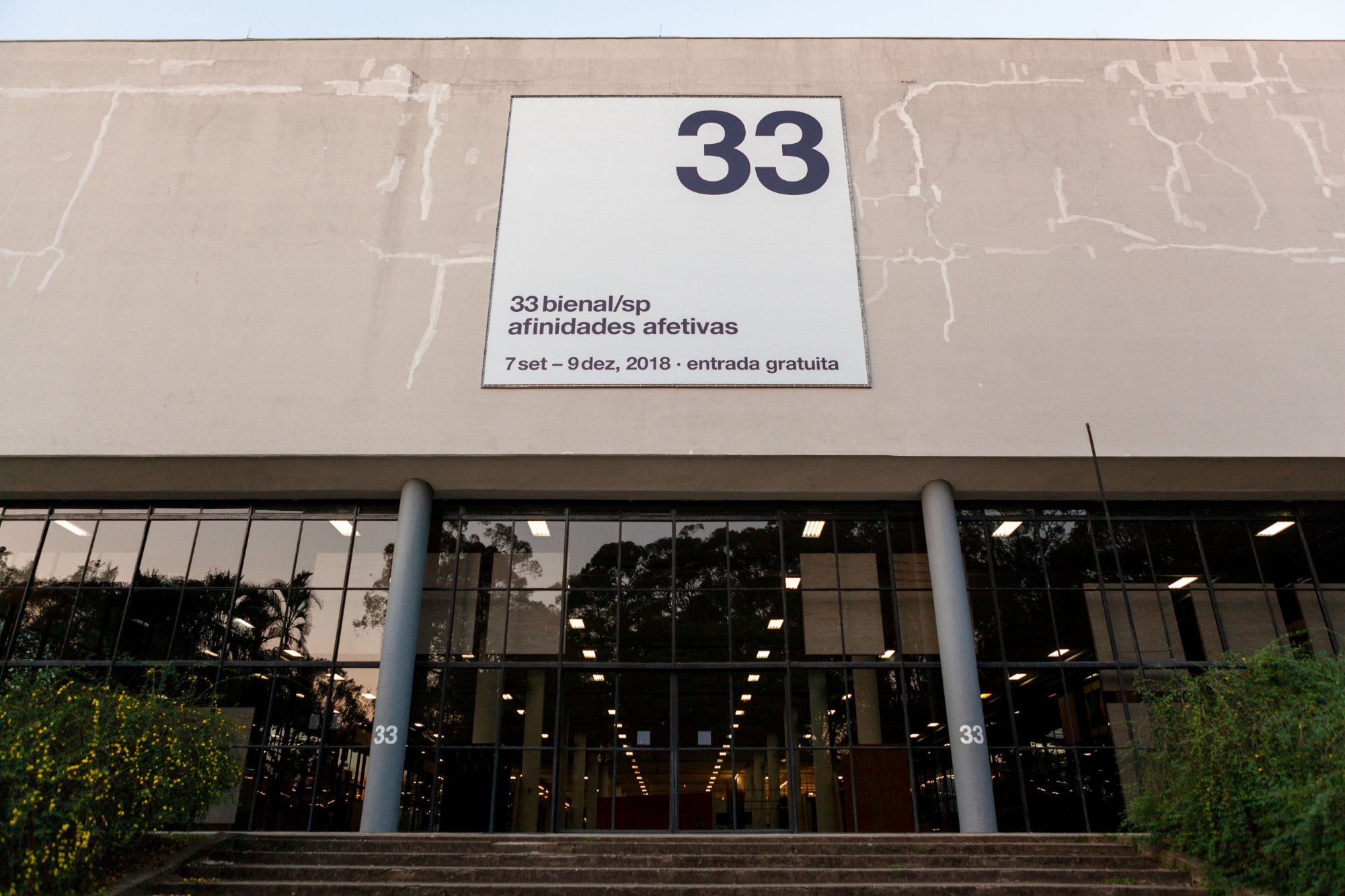
Exhibition view, 33. Bienal de São Paulo 2018 © Pedro Ivo Trasferetti / Fundação Bienal de São Paulo.
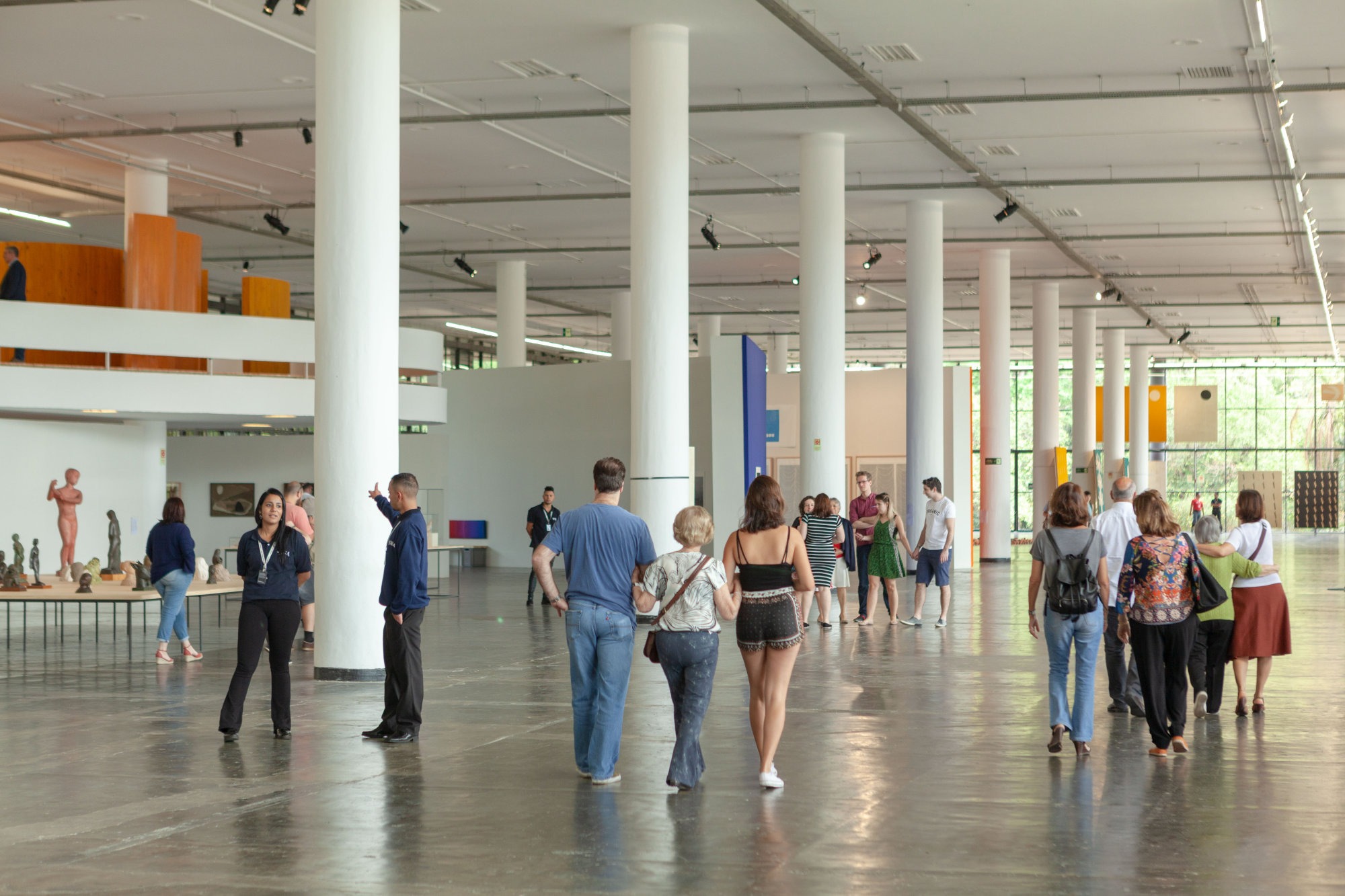
Antonio Ballester Moreno, installation view at the 33. Bienal de São Paulo 2018 © Pedro Ivo Trasferetti / Fundação Bienal de São Paulo.o.
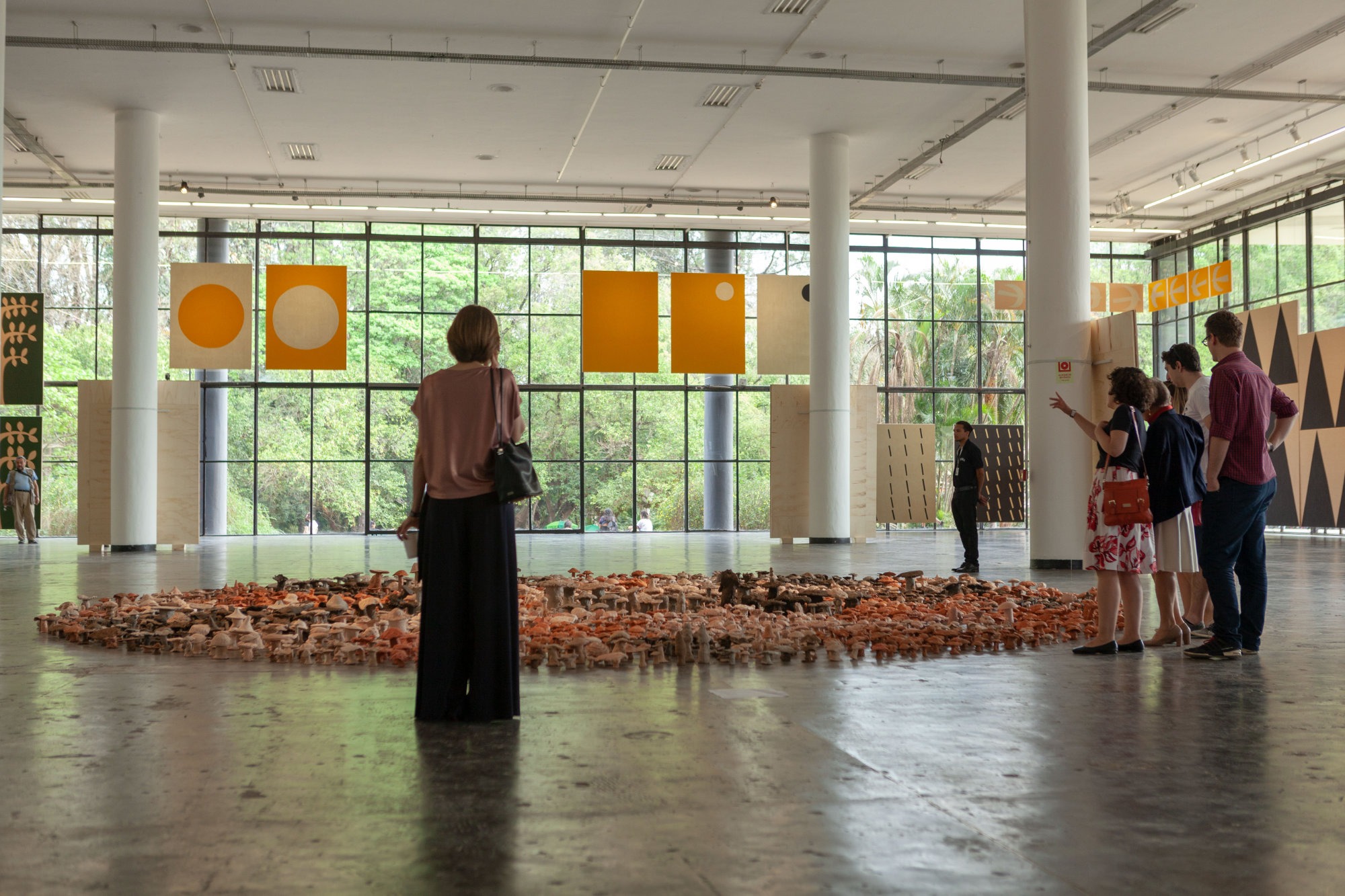
Antonio Ballester Moreno, installation view at the 33. Bienal de São Paulo 2018 © Pedro Ivo Trasferetti / Fundação Bienal de São Paulo.
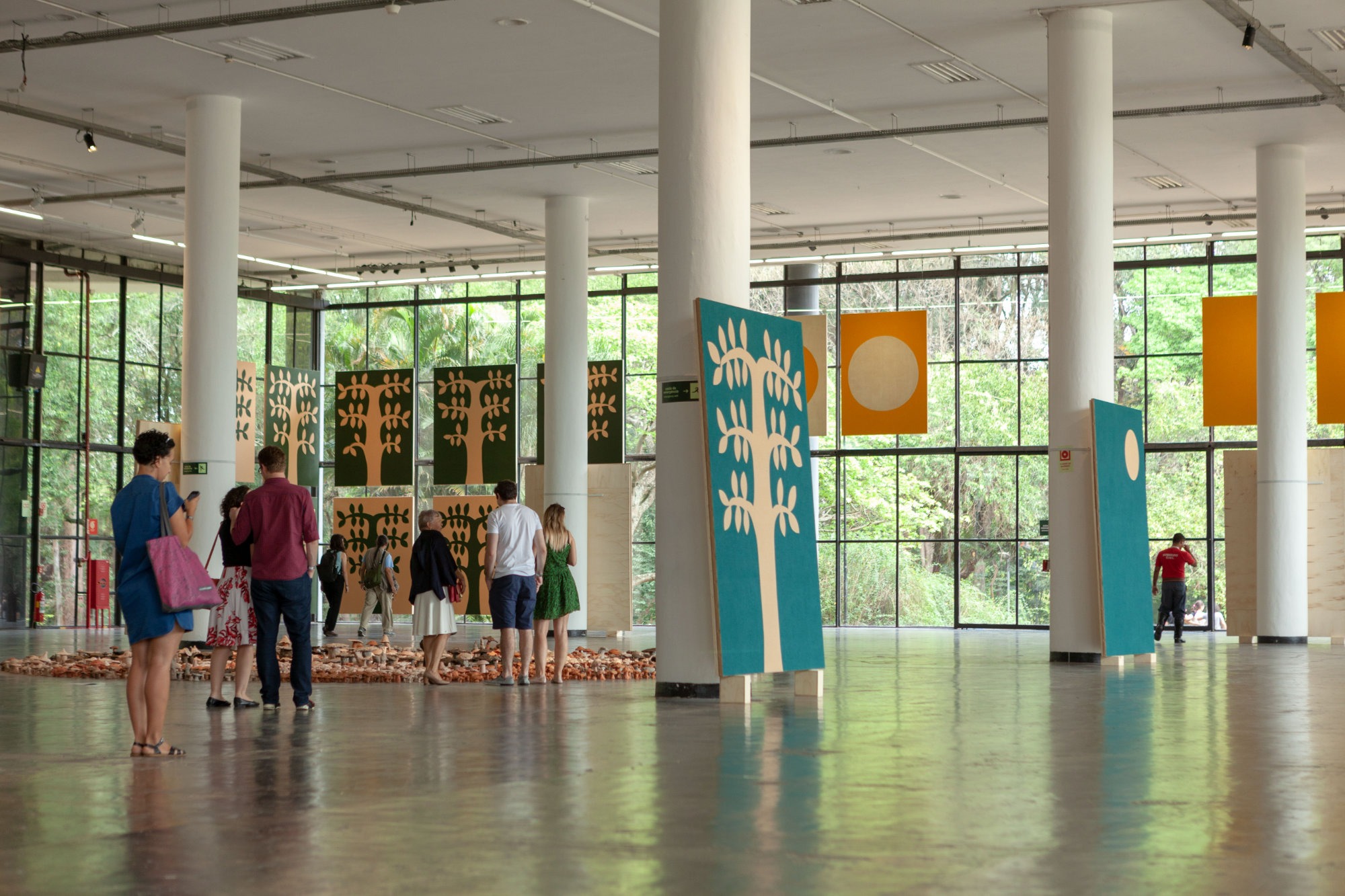
Antonio Ballester Moreno, installation view at the 33. Bienal de São Paulo 2018 © Pedro Ivo Trasferetti / Fundação Bienal de São Paulo.
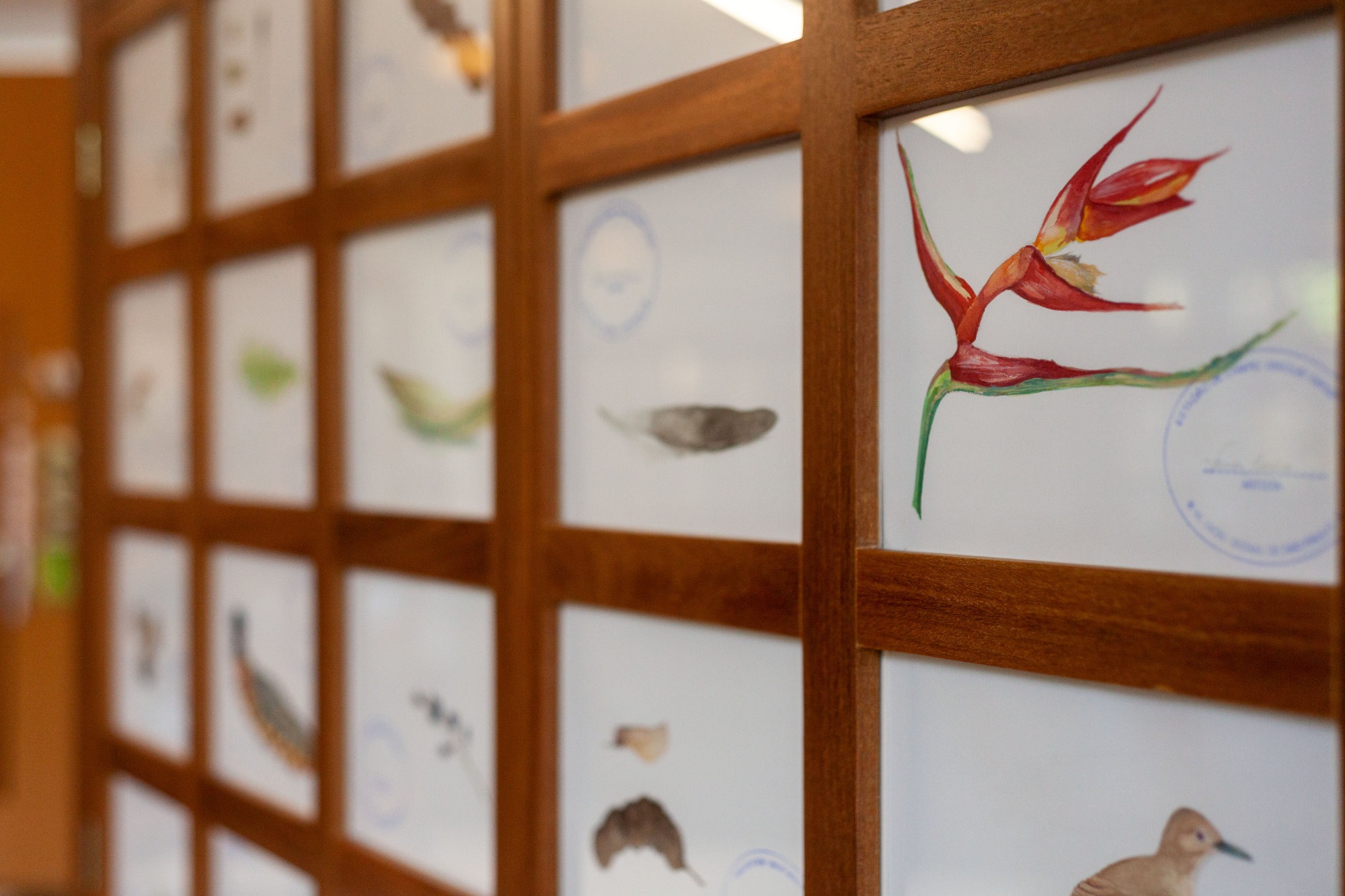
Mark Dion, installation view at the 33. Bienal de São Paulo 2018 © Daniel Malva / Fundação Bienal de São Paulo.
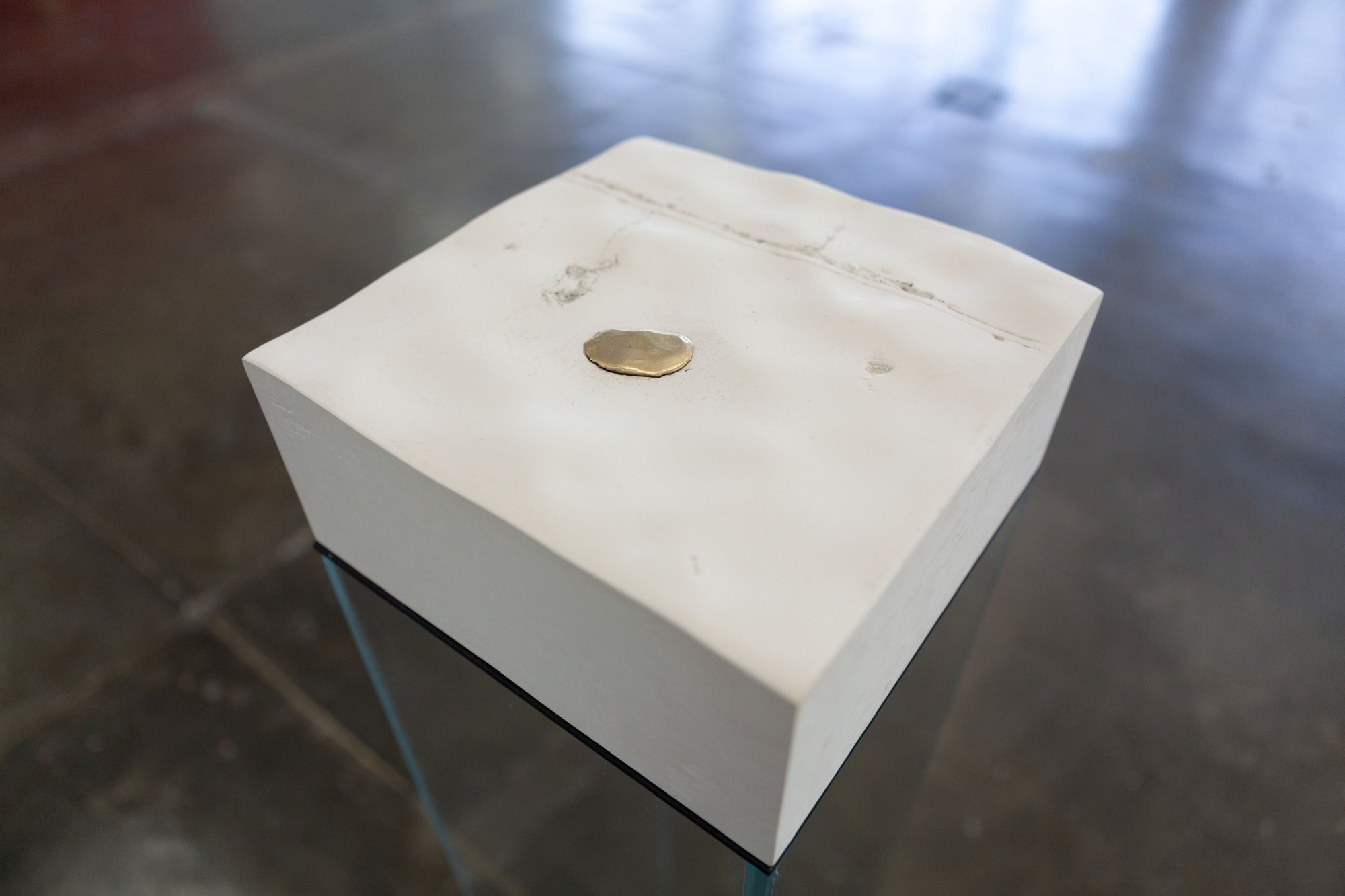
Nicole Vlado, installation view at the 33. Bienal de São Paulo 2018 © Pedro Ivo Trasferetti / Fundação Bienal de São Paulo
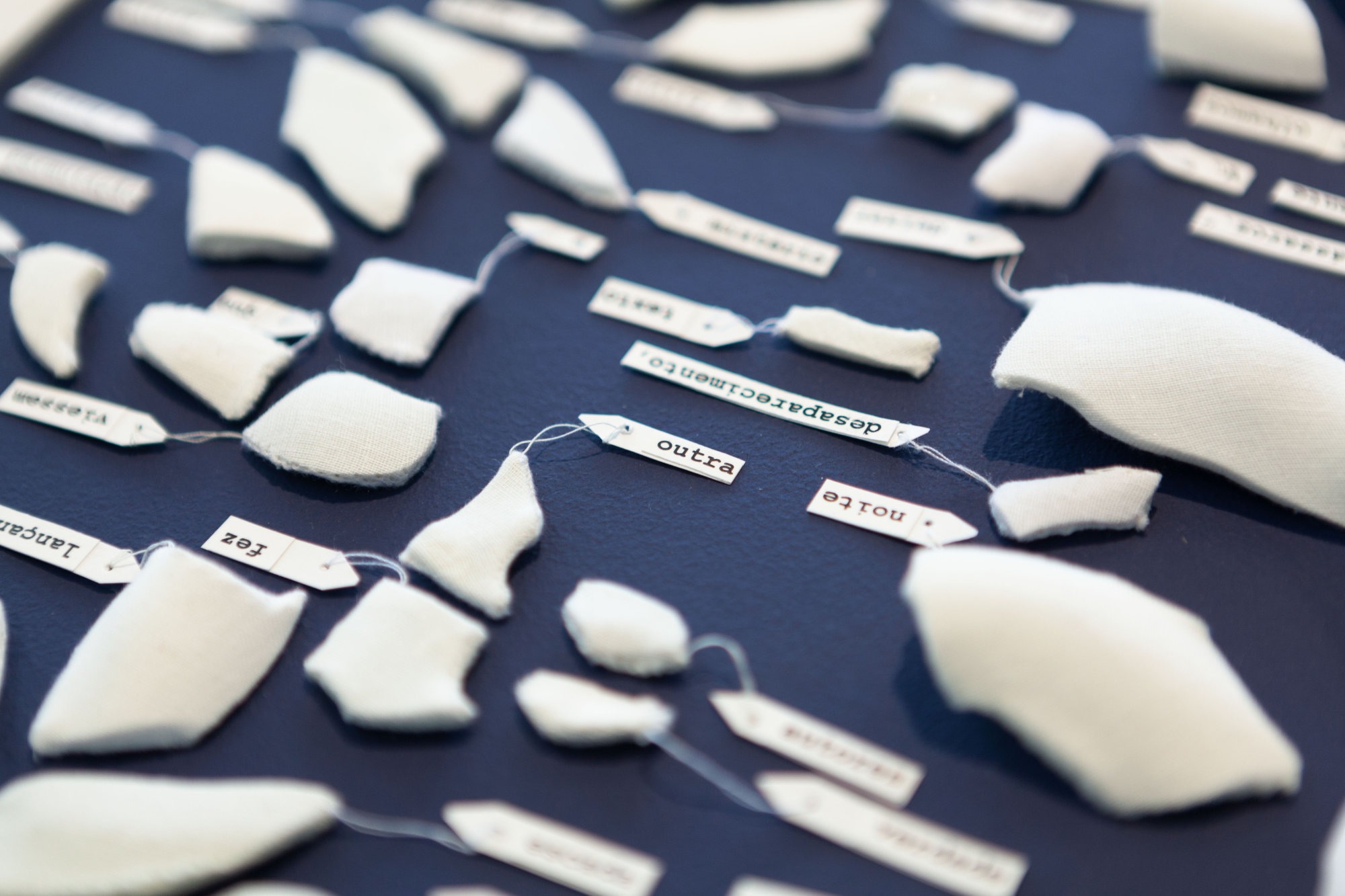
Claudia Fontes, installation view at the 33. Bienal de São Paulo 2018 © Pedro Ivo Trasferetti / Fundação Bienal de São Paulo
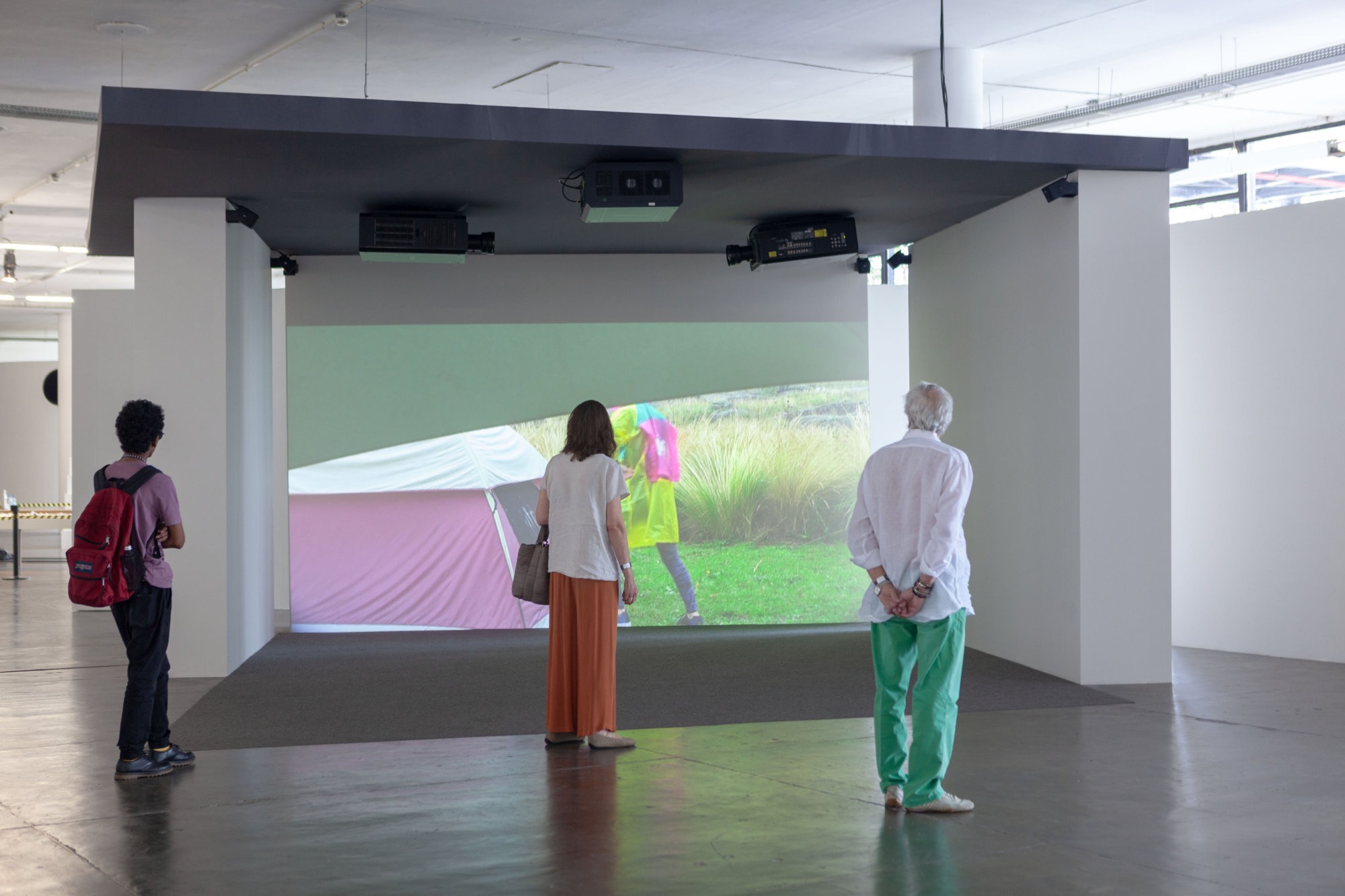
Claudia Fontes, installation view at the 33. Bienal de São Paulo 2018 © Pedro Ivo Trasferetti / Fundação Bienal de São Paulo.
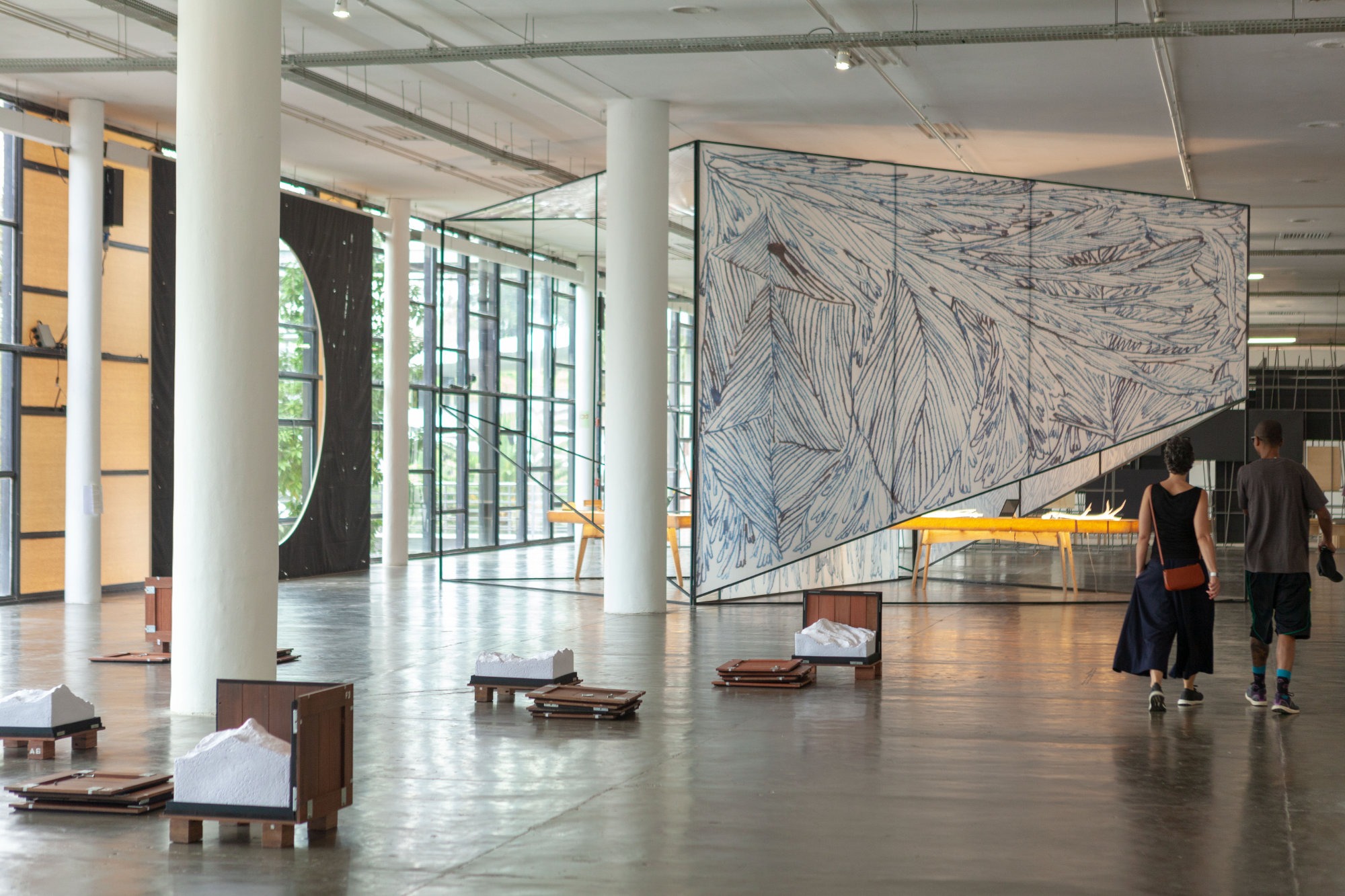
Claudia Fontes, installation view at the 33. Bienal de São Paulo 2018 © Pedro Ivo Trasferetti / Fundação Bienal de São Paulo.
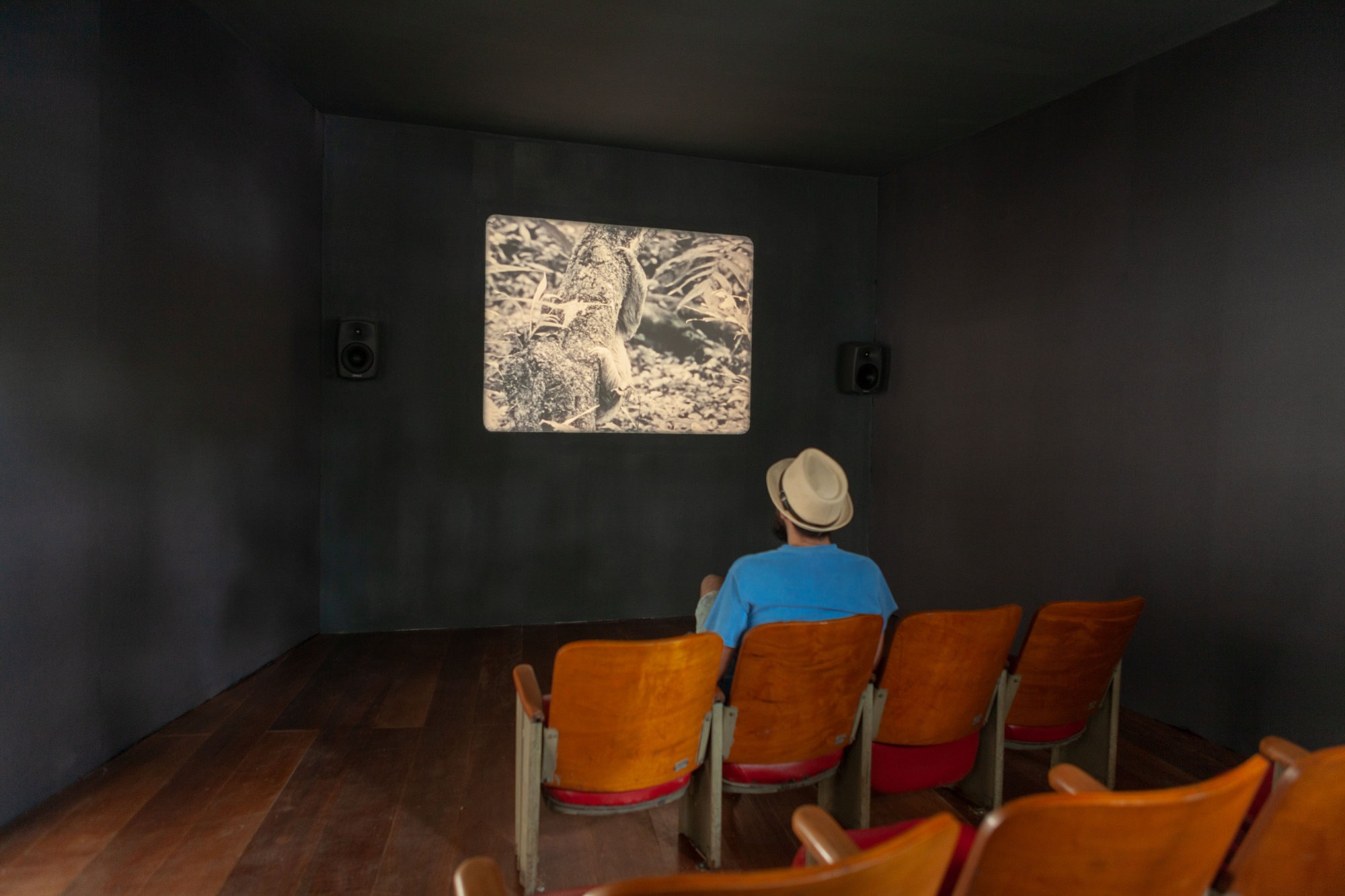
Ben Rivers, installation view at the 33. Bienal de São Paulo 2018 © Pedro Ivo Trasferetti / Fundação Bienal de São Paulo.
Affective Affinities
Artistic Director: Gabriel Pérez-Barreiro
In his 1809 novel, Elective Affinities, Goethe tells a story of a bourgeois couple whose idyllic life is disturbed by the appearance of two new characters into their relationship: the wife’s foster‐daughter, and the husband’s childhood friend. As is often the case in such stories, new relationships are forged beyond the social conventions of the time. So far, so typical. However, when the four protagonists are sitting in their well-equipped library enjoying an evening of music-making and reading, one of them takes a scientific treatise from the shelf and reads aloud about the reaction of certain compounds and molecules, and how some will attract and some will repel, like oil and water. Goethe seems to be inviting us to draw a parallel between the elective affinities of the natural world, and the conflictive emotional and spiritual lives of the characters in the novel. If our tastes and affinities are governed by laws we do not fully understand, we are potentially faced with an organizing system that is not primarily moral, or cultural, or biological, but some strange amalgam of all three, in which our affinity, be it conscious or unconscious, leads the way.
Almost a century and a half later, in a Brazil on the verge of a revolution in the arts (reinforced by the creation of the Bienal de São Paulo in 1951), the art critic and political activist Mário Pedrosa wrote his thesis “On the Affective Nature of Form in the Work of Art.” In this text, he uses Gestalt theory to discuss the ways in which a viewer actively constructs an understanding of any artwork, in a dialogue between the formal characteristics of the work, and the viewer’s psychological makeup. The dialogical nature of this framework, and its embracing of both formal analysis and subjectivity, was to prove transformative for the development of Brazilian art from the early 1950s to the present. By simultaneously empowering and relativizing the individual viewer, Pedrosa articulated a profoundly humanist perspective through which to understand art and its effects (or affects, 18 to use his term), independently of the prevalent ideological battleground in which x art form was to be considered inherently superior to y art form. For Pedrosa, art was to be judged primarily in terms of its ability to create a productive relationship between the artist’s intention and the viewer’s sensibility. As one of the most important political activists of the 20th century, Pedrosa was also crystal-clear about art’s revolutionary potential within this framework of individual emancipation, resisting calls for a ‘political’ art at the level of its narrative contents.
I would argue that Goethe and Pedrosa’s ideas, applied to our current reality, can offer a useful and enriching way to think about the challenges and contributions of a contemporary art biennial. Could the concepts of affinity and affect provide a different framework, or operating system, within which to organize a Bienal? For the 33rd edition of the Bienal de São Paulo, I am proposing that the centralized, discursive, and top-down Bienal – that today is the standard protocol for international biennials – can evolve into a more diversified experience, in which the hierarchy between art and curatorial practice can be re-thought. For this edition, I invited seven artists to comprise the curatorial team, each with the invitation to curate a standalone exhibition within the pavilion, in which their own work would be included, alongside artists of their choice. With this model, I hope to show how artists construct their own lineages and systems to understand their own practice in relation to others, while also allowing the themes and relationships to emerge organically from the process of exhibition-making, rather than starting with a set of predetermined issues. This choice also reflects a desire to re-evaluate the tradition of artists as curators, which is a central part of modern and contemporary art history, and also of particular relevance in Brazil, where artists have long organized their own discursive platforms. Each artist-curator works with complete freedom in determining the list of artists, the exhibition design, and the internal curatorial logic of their exhibitions, and the resulting diversity of curatorial methodologies is entirely intentional. In addition to these seven group exhibitions, I have selected twelve individual projects by artists I consider to be remarkable for different reasons, and who do not necessarily have a thematic connection between them. Of these twelve projects, three are posthumous exhibitions of key artists of the 1990s who have not received the attention they deserve in recent art history: Lucia Nogueira, Aníbal López, and Feliciano Centurión. In addition, the artist Siron Franco will participate with a selection from his iconic Rua 57 series (1987), a transformative moment in the artist’s production, and also in the history of Brazilian art, in response to an environmentally and socially catastrophic event.
If one of the critiques of the current biennial model is that there is a disconnect between the stated discursive principles and the actual physical experience of being in the space, this issue should be at the center of any proposal for renovation. For the 33rd edition, this concern informs both the physical distribution of art in the pavilion (low-density, and clearly demarcated exhibition spaces), and also the education program. Both of the major Brazilian biennials (São Paulo and Mercosur) have given great priority to mediation and education, and this tradition to my mind separates them from the plethora of biennials where, if this concern exists, it is usually at the level of good intentions, and not in terms of real resources. For this edition, the conceptual focus of the education program is attention: how we administer our capacity to focus or not on what surrounds us. While this is an age-old concern, in our times the issue of attention has become especially pronounced. We are just starting to understand the catastrophic impact of social media in our 20 interpersonal and political lives. Our attention has become the prime product that ‘free’ platforms resell, while continuing to seduce our attention during our waking hours. Visitors to the 33rd Bienal will be offered a number of exercises or protocols through which they can experience the exhibition differently, hopefully counteracting the natural dispersion that occurs in large-scale exhibitions of this type. The emphasis on attention also connects to Pedrosa’s idea of affective form, as it empowers the viewer to create his or her own relationship to the object, and then share that experience with others.
The concept of Affective Affinities works at two levels within this edition. The projects of the artist-curators demonstrate how artists can provide a model for thinking about the relationship between artworks that is born of their life-long and productive relationships within the field in which they work. At another level, by presenting a diversified and fragmented Bienal, free of an overarching thematic framework, the viewer is free to construct his or her own experience of the different proposals, without feeling that the experience will succeed or fail only in the degree to which it corresponds to a central-declared set of principles. At the heart of this edition is a desire to reaffirm the power of art as a unique place to focus attention in, to, and for the world. If we can think of art and its exhibitions primarily as experiences and not as declarations, we may be able to imagine a biennial in which artists, curators and viewers are treated as equals, all able to build their own affective affinities with art and with the world beyond.
Gabriel Pérez-Barreiro
General curator of the 33rd Bienal de São Paulo
Group Exhibitions:
Alejandro Cesarco
To Our Parents
Antonio Ballester Moreno
common/sense
Claudia Fontes
The Slow Bird
Mamma Andersson
Stargazer II
Sofia Borges
The infinite history of things or the end of the tragedy of one
Waltercio Caldas
The Appearances
Wura-Natasha Ogunji
always, never
-
Individual Projects:
Alejandro Corujeira
Aníbal López
Bruno Moreschi
Denise Milan
Feliciano Centurión
Lucia Nogueira
Luiza Crosman
Maria Laet
Nelson Felix
Siron Franco
Tamar Guimarães
Vânia Mignone
-
Group Exhibitions:
always, never
Wura-Natasha Ogunji
always, never
Wura-Natasha Ogunji
For her exhibition project, Wura-Natasha Ogunji invited artists to create — like herself — new artworks in a collaborative and horizontal curatorial project. The work of these six artists is impacted by their individual histories and by the complex relationship they have with their lands, nations and territories:
ruby onyinyechi amanze, Nicole Vlado, Youmna Chlala, Lhola Amira, Mame-Diarra Niang and Wura-Natasha Ogunji present new works which explore space and site in relationship to the body, history and architecture. Their creative investigations range from the intimate (body, memory, gesture) to the epic (history, nation, the cosmos). Developed in an open dialogue between artists, their individual projects and practices intersect with ideas and questions about bravery, freedom, and experimentation as central aspects of the art-making process. In their creative practices they embrace and explore the unknown: the fissure, glitch, knot, seam, spine, crevice, fold, appearance, non-territory. amanze creates drawings on paper which bend, suspend and reach out into space. Vlado, an artist and architect, focuses on capturing the surfaces of the body, the built environment, and the spaces made between. Amira’s Appearances invoke the past and the future. Chlala considers the spine as a representation of the connection between prescience and memory. Niang’s video installations make up both new and non-territories. Ogunji’s drawings, stitched from both sides of the page, reveal an uncanny beauty on the underside. It is these fissures that become fertile ground for profound experimentation and deep respect for all that they don’t know. [WNO]
Participating artists:
Lhola Amira (SAF, 1984)
Mame-Diarra Niang (FRA, 1982)
Nicole Vlado (EUA, 1980)
ruby onyinyechi amanze (NGR, 1982)
Wura-Natasha Ogunji (EUA/NGR, 1970)
Youmna Chlala (LIB, 1974)
-
common/sense
Antonio Ballester Moreno
Antonio Ballester Moreno (Madrid, Spain, 1977) approaches his curatorial project for the 33rd Bienal de São Paulo as a way of contextualising a universe based in the close relationship between biology and culture, with references to the history of abstraction and its interplay with nature, pedagogy and spirituality. For this purpose, he brings together the work of philosophers, scientists and artists in an exhibition wich encompasses educational toys from historical avant-gardes, artworks from Escuela de Vallecas and works by contemporary artists:
We are all different. Each person sees the world in a different way.
When we move, we also move our world. What surrounds us at each moment is part of a private universe that moves along with us. The environment makes the world.
This said, and fully aware of the myriad languages of the particular world of art, here we are concerned with what unites us – an experience in common that shares the most essential customs of our own nature and of the nature that surrounds us, which we are inevitably part of.
To recover the continuity between the aesthetic experience and the natural processes of life in order to dissolve dualist thinking – fine art versus folk art, the aesthetic versus the practical, or the artist versus supposedly “normal” people – implies accepting the separation between things and people, thoughts and feelings, humanity and nature, the self and the world.
All lives, without exception, are creative, and the purpose of every creation is not pure truth, or self-contained knowledge, but simply the improvement of existence.
Because seeing things united, in their infinite diversity, is more enriching and satisfying. [ABM]
Participating artists:
Andrea Büttner (GER, 1972)
Antonio Ballester Moreno (ESP, 1977)
Escola de Vallecas: Alberto Sánchez (ESP, 1895 – RUS, 1962), Benjamín Palencia (ESP, 1894 – 1980)
Friedrich Fröbel (GER, 1782 – 1852)
José Moreno Cascales (ESP, 1910 – 1982)
Mark Dion (EUA, 1961)
Matríztica: Humberto Maturana (CHI, 1928), Ximena Dávila (CHI, 1952)
Rafael Sánchez-Mateos Paniagua (ESP, 1979)
-
Stargazer II
Mamma Andersson
For her exhibition, Stargazer II, Mamma Andersson brings together a group of artists that have been inspiring and fuelling her own production as a painter. The participants share a common interest in expressive figuration and the human body. The exhibition also includes a large number of Andersson’s paintings, presenting a vibrant dialogue between her practice and her artistic inspiration:
Art is a visual language. Art can be found in a museum, a limestone church from the 13th century, a comic book, or a film from 1912 where cockroaches are the stars.
Art can be educational, created by rules, or self-taught. Regardless, it is absolutely vital for living.
I am mostly interested in the lonely artists who find their own voice in their own unique expression. These artists are often outsiders from birth, though some became outsiders over time.
The artists that I exhibit here are all different from each other, however to me they are all connected. All of them have been crucial to my own creative process at different stages of my life.
The main focus is on painting as I am a painter myself. But if I feel touched by a piece of art it does not matter if it’s a sound piece, a film, a photograph, a sculpture or a drawing.
My own artworks included in the exhibition are from the last eight years. I’ve selected them in relation to the other exhibited artworks as I feel that that these works of mine communicate well with them. [MA]
Participating artists:
Åke Hodell (SWE, 1919 – 2000)
Bruno Knutman (SWE, 1930 – 2017)
Carl Fredrik Hill (SWE, 1849 – 1911)
Dick Bengtsson (SWE, 1936 – 1989)
Ernst Josephson (SWE, 1851 – 1906)
Gunvor Nelson (SWE, 1931)
Henry Darger (EUA, 1892 – 1973)
Russian Icons
Ladislas Starewitch (POL/RUS, 1882 – FRA, 1965)
Lim-Johan (SWE, 1865 – 1944)
Mamma Andersson (SWE, 1962)
Miroslav Tichý (CZE, 1926 – 2011)
-
The Slow Bird
Claudia Fontes
For her exhibition titled O pássaro lento [The Slow Bird], Claudia Fontes draws on a metanarrative: a fictional book of the same title whose content is unknown, except for some fragments and a few material remains. Both Fontes and her invited artists present artworks that activate links between the visual arts, literature and translation, through experiences that propose an expanded temporality:
The Ciccillo Matarazzo Pavilion is a meeting point for human and nonhuman life, each with almost completely opposed temporalities and ways of being in the world. This exhibition takes this polarity as a premise and proposes the image of a slow bird as an antidote to the ideal of velocity which the building represents, with the aim of creating conditions of observation that attract and retain the visitor’s attentive reading. The Slow Bird does not operate in this exhibition as a theme or idea to be illustrated, but rather as an ambiguous figure offered as a common territory from which the invited artists began unique and mutually diverse creative processes. Accompanying the works, there is a detective story that reveals aspects of the curatorial flight of the slow bird: considering the spectator as a reader, the curator as a translator, the artistic fact as evidence of an enigma, and the certainty that this enigma has as many possible solutions as the story has readers. [CF]
Participating artists:
Ben Rivers (UK, 1972)
Claudia Fontes (ARG, 1964)
Daniel Bozhkov (BUL/EUA, 1959)
Elba Bairon (BOL, 1947)
Katrín Sigurdardóttir (ISL/EUA, 1967)
Pablo Martín Ruiz (ARG, 1964)
Paola Sferco (ARG, 1974)
Roderick Hietbrink (HOL, 1975)
Sebastián Castagna (ARG, 1965)
Žilvinas Landzbergas (LTU, 1979)
-
To Our Parents
Alejandro Cesarco
Drawing on his interests in issues such as repetition, narrative and translation, Alejandro Cesarco realizes a curatorship of artworks from artists that share his conceptual and aesthetic concerns.
To our Parents is a dedication, an offering, a form of address, a definition of audience. It is an acknowledgment of the past, and the continuing presence of the past in the present. To dedicate the show to a primary relationship (biological or adopted, literal or metaphorical) is a way of constructing a genealogy and a way of trying to get close to the core source of our understandings, methods, inhibitions, possibilities, expectations, etc.
Some of the questions the show poses are how the past (our history) both enables and frustrates possibilities, how we rewrite the past with our work, and how difference is produced in repetition. More generally, the show calls attention to the structures that allow for certain narratives while silencing others.
The work of resignifying and repeating, through re‐presenting, reframing and restating is taken up in diverse ways by the cross‐generational artists included in the show. The impulse to displace or recontextualize suggests particular queries into cultural and aesthetic politics. A rose is a rose is a rose, until it is not. [AC]
Participating artists:
Alejandro Cesarco (URU/EUA, 1975)
Andrea Büttner (GER, 1972)
Cameron Rowland (EUA, 1988)
Henrik Olesen (DEN, 1967)
Jennifer Packer (EUA, 1984)
John Miller* (EUA, 1954)
Louise Lawler (EUA, 1947)
Matt Mullican (EUA, 1951)
Oliver Laric (AUT, 1981)
Peter Dreher (GER, 1932)
Sara Cwynar (CAN, 1985)
Sturtevant (EUA, 1924 – FRA, 2014)
* including work in collaboration with Richard Hoeck (AUT, 1965)
-
The Appearances
Waltercio Caldas
Waltercio Caldas, whose production has always drawn on history of art, proposes an exhibition where artworks from different artists are confronted with his own works. Caldas proposes a reflection on poetics, as well as the nature of forms and ideas and their implication on the production of art since the late 19th century:
I do not need a curatorial operation if I can exercise three correlated activities: that of the artist who produces a work, that of the artist who has preferences, and that of a third party who thinks about the relationship between the two previous ones. Thus, I can deal with the questions as I would like, without making them discursive, casting suspicion on the aesthetic theories and justifications. I present my choices as a musical composition, avoiding any concepts or excesses that tend to minimize the experience with the artworks. The resulting music would be the explicit form of the relationship between the spectator and what he or she is observing. It is always good to remember that true works of art are oblivious to any discourse that would misrepresent them, and are sufficiently eloquent to deauthorize opportunistic interpretations. Substituting the idea of demonstration by the idea of presentation, I intend to clarify what is happening there, in the diversity of the selected artworks; and I recognize in this confrontation something that is more important than a supposed curatorial authority over them. This autonomy, this unique language that each artwork possesses, is beneficial to the experience, as it is now up only to the artworks to talk about the unknown that justify them. Based on the principle that there are good-humored risks, I believe that art can improve the quality of the unknown. And the question that remains for us is: how to change the rules for the benefit of what we do not yet know? [WC]
Participating artists:
Anthony Caro (UK, 1924 – 2013)
Antonio Calderara (ITA, 1903 – 1978)
Antonio Dias (BRA, 1944)
Armando Reverón (VEN, 1889 – 1954)
Blaise Cendrars (SUI, 1887 – 1961)
Bruce Nauman (EUA, 1941)
Cabelo (BRA, 1967)
Friedrich Vordemberge-Gildewart (GER, 1899 – 1962)
Gego (GER, 1912 – VEN, 1994
Jorge Oteiza (ESP, 1908 – 2003)
José Resende (BRA, 1945)
Miguel Rio Branco (ESP, 1946)
Milton Dacosta (BRA, 1915 – 1988)
Oswaldo Goeldi (BRA, 1895 – 1961)
Richard Hamilton (UK, 1922 – 2011)
Sergio Camargo (BRA, 1930 – 1990)
Tunga (BRA, 1952 – 2016)
Vicente do Rego Monteiro (BRA, 1899 – 1970)
Victor Hugo (FRA, 1802 – 1885)
Waltercio Caldas (BRA, 1946)
-
The infinite history of things or the end of the tragedy of one
Sofia Borges
Sofia Borges’ curatorial project, titled A infinita história das coisas ou o fim da tragédia do um [The Infinite History of Things or the End of the Tragedy of One], explores a collage of mythological references based on philosophical interpretations of Greek tragedy. Her proposal is to investigate the limits of representation and language’s inability to mediate the real:
The infinity of everything was one. The unity of meaning was a circle. The void of the void was complete. The entrance of the end would never close. And not even on the one could fit in the open. Because the gap between everything was an egg. The emitted light was a vessel. And the absence that existed was whole. The truth did not contain the present. Past was an unison yes. Delusion was of an ancient sort. Forest was a form of fear. And the word would only knew it’s beyond. The golden did not even exist, since it knew itself was endless. Where everything existed without form. The place of the endless was one. The circle was always a straight line. And the return was nothing but the beginning. Each thing that existed was the everything. And truth knew not even its own sound. Thus, everything could change. [SB]
Participating artists:
Adelina Gomes (BRA, 1916 – 1984)
Ana Prata (BRA, 1980)
Antonio Malta Campos (BRA, 1961)
Arthur Amora*
Bruno Palazzo (BRA, 1981)
Bruno Dunley (BRA, 1984)
Carlos Ibraim*
Carlos Pertuis (BRA, 1910 – 1977)
Coletivo Summit: Alessandra Meili (BRA, 1970), Rebecca Sharp (BRA, 1976) and Sofia Borges
Grupo Pineal (BRA, 2018)
Guga Szabzon (BRA, 1987)
Isaac Liberato (BRA, 1906 – 1966)
Jennifer Tee (HOL, 1973)
José Alberto de Almeida (BRA, 1959)
Lea M. Afonso Resende*
Leda Catunda (BRA, 1961)
Martin Gusinde (POL, 1886 – AUT, 1969)
Rafael Carneiro (BRA, 1985)
Sara Ramo (ESP, 1975)
Sarah Lucas (UK, 1962)
Serafim Alvares*
Sofia Borges (BRA, 1984)
Sônia Catarina Agostinho Nascimento (BRA, 1959 – 2004)
Tal Isaac Hadad (FRA, 1976)
Thomas Dupal (SIN/FRA, 1981)
Tunga (BRA, 1952 – 2016)
Vicente*
* artists with no biographical data available
-
Individual Projects:
Siron Franco (BRA, 1950) records a radiation accident that took place in 1987, when a neighbourhood of Goiania called Bairro Popular was contaminated with Caesium 137.
Luiza Crosman's (BRA, 1987) project is linked to the current of institutional critique and move away from traditional art mediums.
Alejandro Corujeira (ARG, 1961) has a light and fluid formal perception, which appears to want to capture the movement of nature.
Nelson Felix' (BRA, 1954) formal work appears to materialize a planetary awareness.
Tamar Guimarães (BRA, 1967) merges a critical institutional approach with poetic and narrative concerns in a new video.
Bruno Moreschi (BRA, 1982) is creating an archive of experiences that are not those of an official archive.
Denise Milan (BRA, 1954) creates sculptures and installations with large stones and crystals.
Maria Laet: The everyday is the inspiration behind the artworks produced by Maria Laet (BRA, 1982), who is exhibiting a new video.
Aníbal López (GUA, 1964-2014) was one of the precursors of performance art in Guatemala.
Vânia Mignone: Brazilian popular music and the everyday life are the inspiration behind the artworks produced by Vânia Mignone (BRA, 1967).
Feliciano Centurión (PAR, 1962 – ARG, 1996) express elements of his personal history based on a family tradition common in Paraguayan culture.
Lucia Nogueira's (BRA, 1950 – UK, 1998) sculptures and installations subvert the utilitarianism of objects with subtle humour.
Artistic Director: Gabriel Pérez-Barreiro
In his 1809 novel, Elective Affinities, Goethe tells a story of a bourgeois couple whose idyllic life is disturbed by the appearance of two new characters into their relationship: the wife’s foster‐daughter, and the husband’s childhood friend. As is often the case in such stories, new relationships are forged beyond the social conventions of the time. So far, so typical. However, when the four protagonists are sitting in their well-equipped library enjoying an evening of music-making and reading, one of them takes a scientific treatise from the shelf and reads aloud about the reaction of certain compounds and molecules, and how some will attract and some will repel, like oil and water. Goethe seems to be inviting us to draw a parallel between the elective affinities of the natural world, and the conflictive emotional and spiritual lives of the characters in the novel. If our tastes and affinities are governed by laws we do not fully understand, we are potentially faced with an organizing system that is not primarily moral, or cultural, or biological, but some strange amalgam of all three, in which our affinity, be it conscious or unconscious, leads the way.
Almost a century and a half later, in a Brazil on the verge of a revolution in the arts (reinforced by the creation of the Bienal de São Paulo in 1951), the art critic and political activist Mário Pedrosa wrote his thesis “On the Affective Nature of Form in the Work of Art.” In this text, he uses Gestalt theory to discuss the ways in which a viewer actively constructs an understanding of any artwork, in a dialogue between the formal characteristics of the work, and the viewer’s psychological makeup. The dialogical nature of this framework, and its embracing of both formal analysis and subjectivity, was to prove transformative for the development of Brazilian art from the early 1950s to the present. By simultaneously empowering and relativizing the individual viewer, Pedrosa articulated a profoundly humanist perspective through which to understand art and its effects (or affects, 18 to use his term), independently of the prevalent ideological battleground in which x art form was to be considered inherently superior to y art form. For Pedrosa, art was to be judged primarily in terms of its ability to create a productive relationship between the artist’s intention and the viewer’s sensibility. As one of the most important political activists of the 20th century, Pedrosa was also crystal-clear about art’s revolutionary potential within this framework of individual emancipation, resisting calls for a ‘political’ art at the level of its narrative contents.
I would argue that Goethe and Pedrosa’s ideas, applied to our current reality, can offer a useful and enriching way to think about the challenges and contributions of a contemporary art biennial. Could the concepts of affinity and affect provide a different framework, or operating system, within which to organize a Bienal? For the 33rd edition of the Bienal de São Paulo, I am proposing that the centralized, discursive, and top-down Bienal – that today is the standard protocol for international biennials – can evolve into a more diversified experience, in which the hierarchy between art and curatorial practice can be re-thought. For this edition, I invited seven artists to comprise the curatorial team, each with the invitation to curate a standalone exhibition within the pavilion, in which their own work would be included, alongside artists of their choice. With this model, I hope to show how artists construct their own lineages and systems to understand their own practice in relation to others, while also allowing the themes and relationships to emerge organically from the process of exhibition-making, rather than starting with a set of predetermined issues. This choice also reflects a desire to re-evaluate the tradition of artists as curators, which is a central part of modern and contemporary art history, and also of particular relevance in Brazil, where artists have long organized their own discursive platforms. Each artist-curator works with complete freedom in determining the list of artists, the exhibition design, and the internal curatorial logic of their exhibitions, and the resulting diversity of curatorial methodologies is entirely intentional. In addition to these seven group exhibitions, I have selected twelve individual projects by artists I consider to be remarkable for different reasons, and who do not necessarily have a thematic connection between them. Of these twelve projects, three are posthumous exhibitions of key artists of the 1990s who have not received the attention they deserve in recent art history: Lucia Nogueira, Aníbal López, and Feliciano Centurión. In addition, the artist Siron Franco will participate with a selection from his iconic Rua 57 series (1987), a transformative moment in the artist’s production, and also in the history of Brazilian art, in response to an environmentally and socially catastrophic event.
If one of the critiques of the current biennial model is that there is a disconnect between the stated discursive principles and the actual physical experience of being in the space, this issue should be at the center of any proposal for renovation. For the 33rd edition, this concern informs both the physical distribution of art in the pavilion (low-density, and clearly demarcated exhibition spaces), and also the education program. Both of the major Brazilian biennials (São Paulo and Mercosur) have given great priority to mediation and education, and this tradition to my mind separates them from the plethora of biennials where, if this concern exists, it is usually at the level of good intentions, and not in terms of real resources. For this edition, the conceptual focus of the education program is attention: how we administer our capacity to focus or not on what surrounds us. While this is an age-old concern, in our times the issue of attention has become especially pronounced. We are just starting to understand the catastrophic impact of social media in our 20 interpersonal and political lives. Our attention has become the prime product that ‘free’ platforms resell, while continuing to seduce our attention during our waking hours. Visitors to the 33rd Bienal will be offered a number of exercises or protocols through which they can experience the exhibition differently, hopefully counteracting the natural dispersion that occurs in large-scale exhibitions of this type. The emphasis on attention also connects to Pedrosa’s idea of affective form, as it empowers the viewer to create his or her own relationship to the object, and then share that experience with others.
The concept of Affective Affinities works at two levels within this edition. The projects of the artist-curators demonstrate how artists can provide a model for thinking about the relationship between artworks that is born of their life-long and productive relationships within the field in which they work. At another level, by presenting a diversified and fragmented Bienal, free of an overarching thematic framework, the viewer is free to construct his or her own experience of the different proposals, without feeling that the experience will succeed or fail only in the degree to which it corresponds to a central-declared set of principles. At the heart of this edition is a desire to reaffirm the power of art as a unique place to focus attention in, to, and for the world. If we can think of art and its exhibitions primarily as experiences and not as declarations, we may be able to imagine a biennial in which artists, curators and viewers are treated as equals, all able to build their own affective affinities with art and with the world beyond.
Gabriel Pérez-Barreiro
General curator of the 33rd Bienal de São Paulo
Group Exhibitions:
Alejandro Cesarco
To Our Parents
Antonio Ballester Moreno
common/sense
Claudia Fontes
The Slow Bird
Mamma Andersson
Stargazer II
Sofia Borges
The infinite history of things or the end of the tragedy of one
Waltercio Caldas
The Appearances
Wura-Natasha Ogunji
always, never
-
Individual Projects:
Alejandro Corujeira
Aníbal López
Bruno Moreschi
Denise Milan
Feliciano Centurión
Lucia Nogueira
Luiza Crosman
Maria Laet
Nelson Felix
Siron Franco
Tamar Guimarães
Vânia Mignone
-
Group Exhibitions:
always, never
Wura-Natasha Ogunji
always, never
Wura-Natasha Ogunji
For her exhibition project, Wura-Natasha Ogunji invited artists to create — like herself — new artworks in a collaborative and horizontal curatorial project. The work of these six artists is impacted by their individual histories and by the complex relationship they have with their lands, nations and territories:
ruby onyinyechi amanze, Nicole Vlado, Youmna Chlala, Lhola Amira, Mame-Diarra Niang and Wura-Natasha Ogunji present new works which explore space and site in relationship to the body, history and architecture. Their creative investigations range from the intimate (body, memory, gesture) to the epic (history, nation, the cosmos). Developed in an open dialogue between artists, their individual projects and practices intersect with ideas and questions about bravery, freedom, and experimentation as central aspects of the art-making process. In their creative practices they embrace and explore the unknown: the fissure, glitch, knot, seam, spine, crevice, fold, appearance, non-territory. amanze creates drawings on paper which bend, suspend and reach out into space. Vlado, an artist and architect, focuses on capturing the surfaces of the body, the built environment, and the spaces made between. Amira’s Appearances invoke the past and the future. Chlala considers the spine as a representation of the connection between prescience and memory. Niang’s video installations make up both new and non-territories. Ogunji’s drawings, stitched from both sides of the page, reveal an uncanny beauty on the underside. It is these fissures that become fertile ground for profound experimentation and deep respect for all that they don’t know. [WNO]
Participating artists:
Lhola Amira (SAF, 1984)
Mame-Diarra Niang (FRA, 1982)
Nicole Vlado (EUA, 1980)
ruby onyinyechi amanze (NGR, 1982)
Wura-Natasha Ogunji (EUA/NGR, 1970)
Youmna Chlala (LIB, 1974)
-
common/sense
Antonio Ballester Moreno
Antonio Ballester Moreno (Madrid, Spain, 1977) approaches his curatorial project for the 33rd Bienal de São Paulo as a way of contextualising a universe based in the close relationship between biology and culture, with references to the history of abstraction and its interplay with nature, pedagogy and spirituality. For this purpose, he brings together the work of philosophers, scientists and artists in an exhibition wich encompasses educational toys from historical avant-gardes, artworks from Escuela de Vallecas and works by contemporary artists:
We are all different. Each person sees the world in a different way.
When we move, we also move our world. What surrounds us at each moment is part of a private universe that moves along with us. The environment makes the world.
This said, and fully aware of the myriad languages of the particular world of art, here we are concerned with what unites us – an experience in common that shares the most essential customs of our own nature and of the nature that surrounds us, which we are inevitably part of.
To recover the continuity between the aesthetic experience and the natural processes of life in order to dissolve dualist thinking – fine art versus folk art, the aesthetic versus the practical, or the artist versus supposedly “normal” people – implies accepting the separation between things and people, thoughts and feelings, humanity and nature, the self and the world.
All lives, without exception, are creative, and the purpose of every creation is not pure truth, or self-contained knowledge, but simply the improvement of existence.
Because seeing things united, in their infinite diversity, is more enriching and satisfying. [ABM]
Participating artists:
Andrea Büttner (GER, 1972)
Antonio Ballester Moreno (ESP, 1977)
Escola de Vallecas: Alberto Sánchez (ESP, 1895 – RUS, 1962), Benjamín Palencia (ESP, 1894 – 1980)
Friedrich Fröbel (GER, 1782 – 1852)
José Moreno Cascales (ESP, 1910 – 1982)
Mark Dion (EUA, 1961)
Matríztica: Humberto Maturana (CHI, 1928), Ximena Dávila (CHI, 1952)
Rafael Sánchez-Mateos Paniagua (ESP, 1979)
-
Stargazer II
Mamma Andersson
For her exhibition, Stargazer II, Mamma Andersson brings together a group of artists that have been inspiring and fuelling her own production as a painter. The participants share a common interest in expressive figuration and the human body. The exhibition also includes a large number of Andersson’s paintings, presenting a vibrant dialogue between her practice and her artistic inspiration:
Art is a visual language. Art can be found in a museum, a limestone church from the 13th century, a comic book, or a film from 1912 where cockroaches are the stars.
Art can be educational, created by rules, or self-taught. Regardless, it is absolutely vital for living.
I am mostly interested in the lonely artists who find their own voice in their own unique expression. These artists are often outsiders from birth, though some became outsiders over time.
The artists that I exhibit here are all different from each other, however to me they are all connected. All of them have been crucial to my own creative process at different stages of my life.
The main focus is on painting as I am a painter myself. But if I feel touched by a piece of art it does not matter if it’s a sound piece, a film, a photograph, a sculpture or a drawing.
My own artworks included in the exhibition are from the last eight years. I’ve selected them in relation to the other exhibited artworks as I feel that that these works of mine communicate well with them. [MA]
Participating artists:
Åke Hodell (SWE, 1919 – 2000)
Bruno Knutman (SWE, 1930 – 2017)
Carl Fredrik Hill (SWE, 1849 – 1911)
Dick Bengtsson (SWE, 1936 – 1989)
Ernst Josephson (SWE, 1851 – 1906)
Gunvor Nelson (SWE, 1931)
Henry Darger (EUA, 1892 – 1973)
Russian Icons
Ladislas Starewitch (POL/RUS, 1882 – FRA, 1965)
Lim-Johan (SWE, 1865 – 1944)
Mamma Andersson (SWE, 1962)
Miroslav Tichý (CZE, 1926 – 2011)
-
The Slow Bird
Claudia Fontes
For her exhibition titled O pássaro lento [The Slow Bird], Claudia Fontes draws on a metanarrative: a fictional book of the same title whose content is unknown, except for some fragments and a few material remains. Both Fontes and her invited artists present artworks that activate links between the visual arts, literature and translation, through experiences that propose an expanded temporality:
The Ciccillo Matarazzo Pavilion is a meeting point for human and nonhuman life, each with almost completely opposed temporalities and ways of being in the world. This exhibition takes this polarity as a premise and proposes the image of a slow bird as an antidote to the ideal of velocity which the building represents, with the aim of creating conditions of observation that attract and retain the visitor’s attentive reading. The Slow Bird does not operate in this exhibition as a theme or idea to be illustrated, but rather as an ambiguous figure offered as a common territory from which the invited artists began unique and mutually diverse creative processes. Accompanying the works, there is a detective story that reveals aspects of the curatorial flight of the slow bird: considering the spectator as a reader, the curator as a translator, the artistic fact as evidence of an enigma, and the certainty that this enigma has as many possible solutions as the story has readers. [CF]
Participating artists:
Ben Rivers (UK, 1972)
Claudia Fontes (ARG, 1964)
Daniel Bozhkov (BUL/EUA, 1959)
Elba Bairon (BOL, 1947)
Katrín Sigurdardóttir (ISL/EUA, 1967)
Pablo Martín Ruiz (ARG, 1964)
Paola Sferco (ARG, 1974)
Roderick Hietbrink (HOL, 1975)
Sebastián Castagna (ARG, 1965)
Žilvinas Landzbergas (LTU, 1979)
-
To Our Parents
Alejandro Cesarco
Drawing on his interests in issues such as repetition, narrative and translation, Alejandro Cesarco realizes a curatorship of artworks from artists that share his conceptual and aesthetic concerns.
To our Parents is a dedication, an offering, a form of address, a definition of audience. It is an acknowledgment of the past, and the continuing presence of the past in the present. To dedicate the show to a primary relationship (biological or adopted, literal or metaphorical) is a way of constructing a genealogy and a way of trying to get close to the core source of our understandings, methods, inhibitions, possibilities, expectations, etc.
Some of the questions the show poses are how the past (our history) both enables and frustrates possibilities, how we rewrite the past with our work, and how difference is produced in repetition. More generally, the show calls attention to the structures that allow for certain narratives while silencing others.
The work of resignifying and repeating, through re‐presenting, reframing and restating is taken up in diverse ways by the cross‐generational artists included in the show. The impulse to displace or recontextualize suggests particular queries into cultural and aesthetic politics. A rose is a rose is a rose, until it is not. [AC]
Participating artists:
Alejandro Cesarco (URU/EUA, 1975)
Andrea Büttner (GER, 1972)
Cameron Rowland (EUA, 1988)
Henrik Olesen (DEN, 1967)
Jennifer Packer (EUA, 1984)
John Miller* (EUA, 1954)
Louise Lawler (EUA, 1947)
Matt Mullican (EUA, 1951)
Oliver Laric (AUT, 1981)
Peter Dreher (GER, 1932)
Sara Cwynar (CAN, 1985)
Sturtevant (EUA, 1924 – FRA, 2014)
* including work in collaboration with Richard Hoeck (AUT, 1965)
-
The Appearances
Waltercio Caldas
Waltercio Caldas, whose production has always drawn on history of art, proposes an exhibition where artworks from different artists are confronted with his own works. Caldas proposes a reflection on poetics, as well as the nature of forms and ideas and their implication on the production of art since the late 19th century:
I do not need a curatorial operation if I can exercise three correlated activities: that of the artist who produces a work, that of the artist who has preferences, and that of a third party who thinks about the relationship between the two previous ones. Thus, I can deal with the questions as I would like, without making them discursive, casting suspicion on the aesthetic theories and justifications. I present my choices as a musical composition, avoiding any concepts or excesses that tend to minimize the experience with the artworks. The resulting music would be the explicit form of the relationship between the spectator and what he or she is observing. It is always good to remember that true works of art are oblivious to any discourse that would misrepresent them, and are sufficiently eloquent to deauthorize opportunistic interpretations. Substituting the idea of demonstration by the idea of presentation, I intend to clarify what is happening there, in the diversity of the selected artworks; and I recognize in this confrontation something that is more important than a supposed curatorial authority over them. This autonomy, this unique language that each artwork possesses, is beneficial to the experience, as it is now up only to the artworks to talk about the unknown that justify them. Based on the principle that there are good-humored risks, I believe that art can improve the quality of the unknown. And the question that remains for us is: how to change the rules for the benefit of what we do not yet know? [WC]
Participating artists:
Anthony Caro (UK, 1924 – 2013)
Antonio Calderara (ITA, 1903 – 1978)
Antonio Dias (BRA, 1944)
Armando Reverón (VEN, 1889 – 1954)
Blaise Cendrars (SUI, 1887 – 1961)
Bruce Nauman (EUA, 1941)
Cabelo (BRA, 1967)
Friedrich Vordemberge-Gildewart (GER, 1899 – 1962)
Gego (GER, 1912 – VEN, 1994
Jorge Oteiza (ESP, 1908 – 2003)
José Resende (BRA, 1945)
Miguel Rio Branco (ESP, 1946)
Milton Dacosta (BRA, 1915 – 1988)
Oswaldo Goeldi (BRA, 1895 – 1961)
Richard Hamilton (UK, 1922 – 2011)
Sergio Camargo (BRA, 1930 – 1990)
Tunga (BRA, 1952 – 2016)
Vicente do Rego Monteiro (BRA, 1899 – 1970)
Victor Hugo (FRA, 1802 – 1885)
Waltercio Caldas (BRA, 1946)
-
The infinite history of things or the end of the tragedy of one
Sofia Borges
Sofia Borges’ curatorial project, titled A infinita história das coisas ou o fim da tragédia do um [The Infinite History of Things or the End of the Tragedy of One], explores a collage of mythological references based on philosophical interpretations of Greek tragedy. Her proposal is to investigate the limits of representation and language’s inability to mediate the real:
The infinity of everything was one. The unity of meaning was a circle. The void of the void was complete. The entrance of the end would never close. And not even on the one could fit in the open. Because the gap between everything was an egg. The emitted light was a vessel. And the absence that existed was whole. The truth did not contain the present. Past was an unison yes. Delusion was of an ancient sort. Forest was a form of fear. And the word would only knew it’s beyond. The golden did not even exist, since it knew itself was endless. Where everything existed without form. The place of the endless was one. The circle was always a straight line. And the return was nothing but the beginning. Each thing that existed was the everything. And truth knew not even its own sound. Thus, everything could change. [SB]
Participating artists:
Adelina Gomes (BRA, 1916 – 1984)
Ana Prata (BRA, 1980)
Antonio Malta Campos (BRA, 1961)
Arthur Amora*
Bruno Palazzo (BRA, 1981)
Bruno Dunley (BRA, 1984)
Carlos Ibraim*
Carlos Pertuis (BRA, 1910 – 1977)
Coletivo Summit: Alessandra Meili (BRA, 1970), Rebecca Sharp (BRA, 1976) and Sofia Borges
Grupo Pineal (BRA, 2018)
Guga Szabzon (BRA, 1987)
Isaac Liberato (BRA, 1906 – 1966)
Jennifer Tee (HOL, 1973)
José Alberto de Almeida (BRA, 1959)
Lea M. Afonso Resende*
Leda Catunda (BRA, 1961)
Martin Gusinde (POL, 1886 – AUT, 1969)
Rafael Carneiro (BRA, 1985)
Sara Ramo (ESP, 1975)
Sarah Lucas (UK, 1962)
Serafim Alvares*
Sofia Borges (BRA, 1984)
Sônia Catarina Agostinho Nascimento (BRA, 1959 – 2004)
Tal Isaac Hadad (FRA, 1976)
Thomas Dupal (SIN/FRA, 1981)
Tunga (BRA, 1952 – 2016)
Vicente*
* artists with no biographical data available
-
Individual Projects:
Siron Franco (BRA, 1950) records a radiation accident that took place in 1987, when a neighbourhood of Goiania called Bairro Popular was contaminated with Caesium 137.
Luiza Crosman's (BRA, 1987) project is linked to the current of institutional critique and move away from traditional art mediums.
Alejandro Corujeira (ARG, 1961) has a light and fluid formal perception, which appears to want to capture the movement of nature.
Nelson Felix' (BRA, 1954) formal work appears to materialize a planetary awareness.
Tamar Guimarães (BRA, 1967) merges a critical institutional approach with poetic and narrative concerns in a new video.
Bruno Moreschi (BRA, 1982) is creating an archive of experiences that are not those of an official archive.
Denise Milan (BRA, 1954) creates sculptures and installations with large stones and crystals.
Maria Laet: The everyday is the inspiration behind the artworks produced by Maria Laet (BRA, 1982), who is exhibiting a new video.
Aníbal López (GUA, 1964-2014) was one of the precursors of performance art in Guatemala.
Vânia Mignone: Brazilian popular music and the everyday life are the inspiration behind the artworks produced by Vânia Mignone (BRA, 1967).
Feliciano Centurión (PAR, 1962 – ARG, 1996) express elements of his personal history based on a family tradition common in Paraguayan culture.
Lucia Nogueira's (BRA, 1950 – UK, 1998) sculptures and installations subvert the utilitarianism of objects with subtle humour.
